![]()
![]()
![]()
Use LEFT and RIGHT arrow keys to navigate between flashcards;
Use UP and DOWN arrow keys to flip the card;
H to show hint;
A reads text to speech;
55 Cards in this Set
- Front
- Back
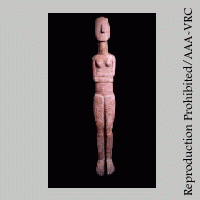
|
Early Bronze Age Aegean The Cyclades cycladic folded arm figurine (FAF) - marble most female, small-scale. some 4-5' tall once painted w/ facial features. left arm over right arm. feet pointed down = cannot stand alone most likely not divinities; not worshipped found in houses, graves, ritual sites = variety of functions rounded belly - good luck charms for pregnant? |
|
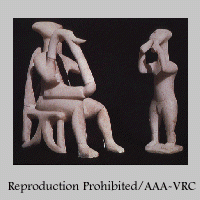
|
Early Bronze Age Aegean The Cyclades cyladic figurine - marble variation in FAF canon w/ different poses |
|
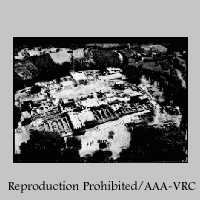
|
Bronze Age Aegean Crete Palace of Minos, Knossos major palace on crete - social, religious, economic center. no fortification = recognized authority of single palace |
|
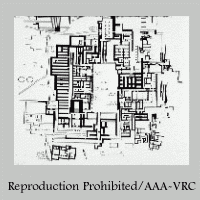
|
Bronze Age Aegean Crete Palace of Minos floorplan, Knossos "Palatian canon" = organized around open-air, paved rectangular "central court". |
|

|
Bronze Age Aegean Palace of Minos court, Knossos central court = religious festivals, sports as rituals |
|
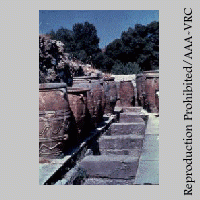
|
Bronze Age Aegean Palace of Minos storage, Knossos |
|
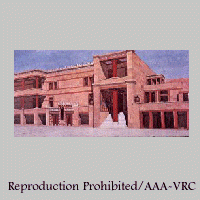
|
Bronze Age Aegean Palace of Minos exterior, Knossos |
|
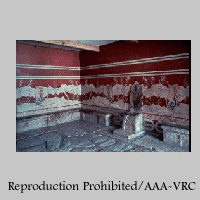
|
Bronze Age Aegean Palace of Minos throne room, Knossos |
|

|
Early Bronze Age Aegean La Parisienne |
|
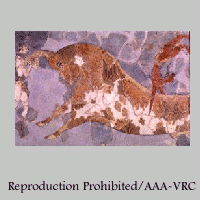
|
Bronze Age Aegean Late Minoan II/III Palace of Minos "Taureador" Fresco white skin woman, red skin male bull-jumping: festival where blood-letting was essential? origin of the myth of the minotaur? |
|
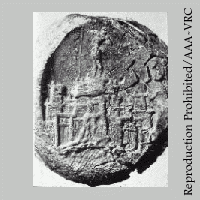
|
Bronze Age Aegean "Master Impression" - Khania, LM 1 King w/ palace? God w/ similar structure? |
|
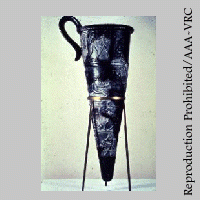
|
Bronze Age Aegean Haghia Triadha, LM1 "Boxer Rhyton" boxing matches + bull-jumping scenes youth impaled |
|

|
Bronze Age Aegean "harvester vase" - Haghia Triadha, LM1 |
|
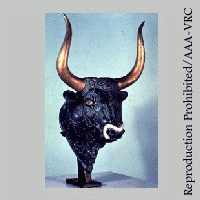
|
Bronze Age Aegean steatite bull's head rhyton |
|
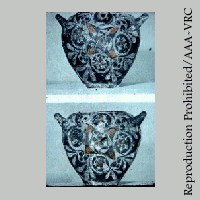
|
Bronze Age Aegean Middle Minoan c. 1800 BC Kamares Ware - colorful, abstract, organic
|
|
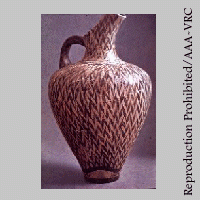
|
Bronze Age Aegean LM1A floral style pottery |
|
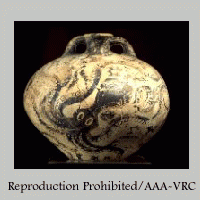
|
Bronze Age Aegean LM1B marine style pottery - octopus |
|
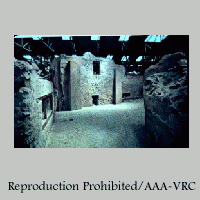
|
Bronze Age Aegean Akrotiri - buried city in Theran eruption. preserved in volcanic ash. harbor architectural features of Crete mansions, Triangle Square, West House... 3rd stories... |
|
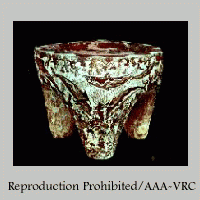
|
Bronze Age Aegean frescoed offering table |
|
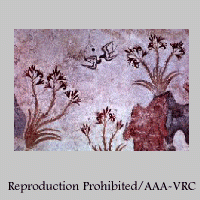
|
Bronze Age Aegean Spring Fresco - Delta 2 3 pinnacles on ea. wall - red lilies, barn swallows great example of naturalism "wet" fresco |
|
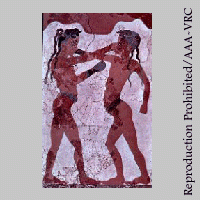
|
Bronze Age Aegean antelope fresco w/ boxing boys gloves on right hands children commonly represented on Thera common scene? ritual event? |
|

|
Bronze Age Aegean Akrotiri. West House - north wall, room 5 battle scene - men drown in the sea. soldiers march inland. |
|
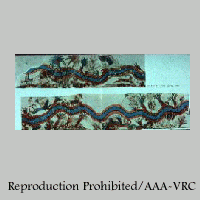
|
Bronze Age Aegean "Nilotic Landscape" West House - East Wallroom 5 cat chasing duck, griffin chasing deer. river w/ palm trees. mythological creatures combined w/ real life |
|
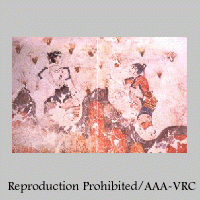
|
Bronze Age Aegean Saffron-Gathering Fresco woman + young girl saffron as offering for Nature Goddess of Saffron |
|
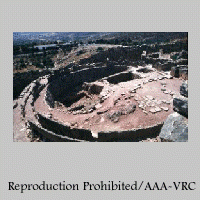
|
Bronze Age Aegean grave circle a, mycenae - "Shaft graves" 19 skeletons, tons of objects |
|
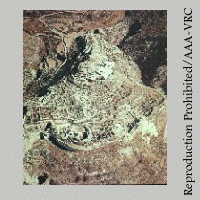
|
Bronze Age Aegean grave circle a, mycenae 19 skeletons, tons of objects |
|
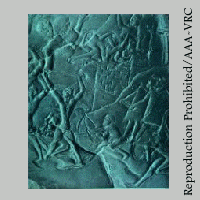
|
Bronze Age Aegean Stele from Grave Circle A warrior in chariot driving against foot-soldier emblematic - figure = timeless symbol 3 stacked horses = symbol of wealth, chariot-driver
|
|
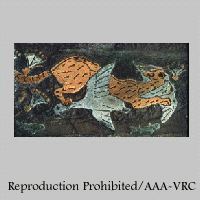
|
Bronze Age Aegean Inlaid Dagger, Grave Circle A cats attacking waterfowl - repeated icon in grecian art. but here the cat actually captures the bird; other examples - cat only stalking prey |
|
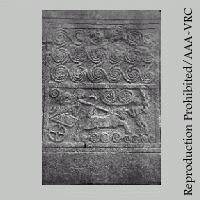
|
Bronze Age Aegean grave stele, grave circle b spirals on top, cowherd fending off lions from bull. other cowherd that has been killed |
|

|
Early Bronze Age Aegean Vapheio Cups, The Vapheio Tomb, Mycenae prince or king. 1 cup in ea. hand gold minoan imports? made on mainland? "quiet" cup - minoan "violent" - mainland fusion of minoan + mycenean tastes: violent imagery w/ naturalistic style/nature focus |
|
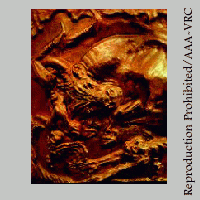
|
Bronze Age Aegean "Violent" Vapheio Cup, The Vapheio Tomb, Mycenae mainland. bull captured in net, one rams human, one escapes. |
|

|
Bronze Age Aegean lions' gate - Mycenae 1250 BC triangular. dignity, strength, scale guards the city
|
|
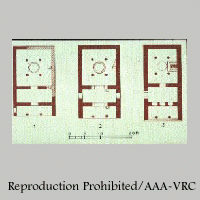
|
Early Bronze Age Aegean Megaron - heart of mycenean palace. enclosed, long rectangular hall - shallow pord, narrow vestibule, square throne room w/ hearth |
|
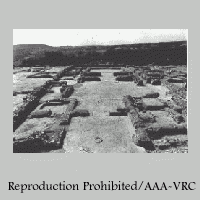
|
Early Bronze Age Aegean palace of nestor, Pylos, Mycenae 1200 BC similar palatial style to Minoan... but heavily fortified cyclopean masonry - only cyclops could have been strong enough to build the walls |
|
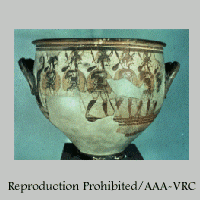
|
Warrior Vase (krater) - Mycenae, end of 12 century BC
|
|
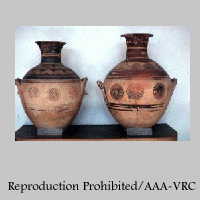
|
Attic Protogeometric Amphora - Athens 1050 - 900 BC symmetria- harmony btwn the parts + btwn the parts + whole order, precision precise concentric semicircles. compass w/ multiple brush |
|
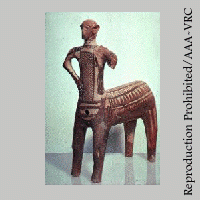
|
Terracotta centaur from lefkandi Cheiron? representation from their myths, stories gash in left knee = tutor of heroes. accidentally injured by Herakles c. 900 |
|
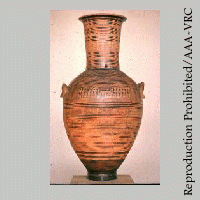
|
late geometric amphora athens 804 the dipylon master, 760-735 BC "The Greek Renaissance" 1st recognizable personality in Greek art symmetria - 1:2 ratio. figures >>> geometric geometric decoration covers vase band of 3 lines, leaf pattern, meander pattern, grazing deer, goats w/ turned heads. center - prothesis (lying in state) woman's grave monument - checkered shroud |
|

|
late geometric amphora athens 804 the dipylon master, 760-735 BC "The Greek Renaissance" female mourners tearing hair out 1:7 ratio prothesis - meant to represent death of particular woman? smaller figure - child of dead woman?
|
|
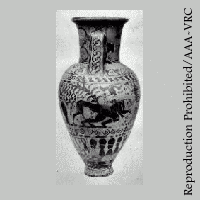
|
The Orientalizing Period Protoattic Vase-Painting new york Nessos amphora, 675-50
|
|
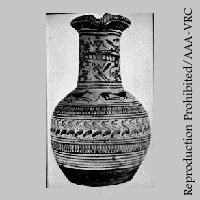
|
Late Geometric Period "shipwreck of odysseus" late geometric II wine jug, c. 730 homer, odyssey Book XII
|
|
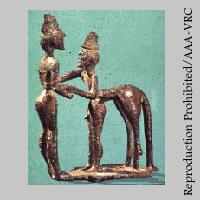
|
Late Geometric bronze figurines New York Bronze Group c. 730 generalized hero (theseus?) + centaur (minotaur?)
|
|
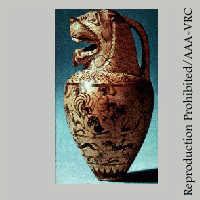
|
macmillian aryballos Chigi painter Protocorinthian, c. 650 BC 7 cm tall lion's head. oriental patterns. rabbit hunt, horse race, battle scene
miniaturism + generic images over mythological narrative
|
|
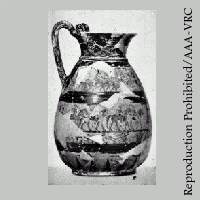
|
The Orientalizing Period Protocorinthian Vase-Painting chigi vase, the Chigi Painter 640 BC 26 cm progression of violence: rabbit hunt, boys with dogs horsemen led by youth in chariot >> sphynx >> lion hunt battle scene - army w/ boy playing double flute mythological below handle: "Judgement of Paris" |
|

|
The Orientalizing Period Protocorinthian Vase-Painting chigi vase, the Chigi Painter 640 BC battle scene - army w/ boy playing double flute |
|
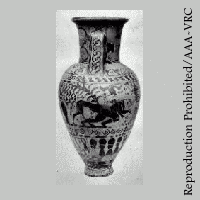
|
The Orientalizing Period Protoattic Vase-Painting new york nessos amphora Nessos tries to rape Herakles' wife - Herakles charges @ Nessos w/ sword + grabs hair - Nessos kneeels similar to Egyptian kneeling foe/pharaoh icon
|
|
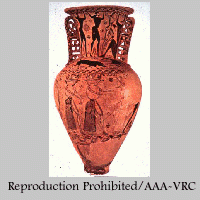
|
The Orientalizing Period Protoattic Vase-Painting The Polyphemus Painter: Eleusis Amphora (675-650) 4.5 ft meant to be grave marker - body of young boy later stored in it Story of Perseus + Medusa Athena - bring head of medusa. medusa = headless Perseus chased by Gorgons - form of cauldron. tripod cauldron w/ griffin protomes. same skin for Gorgons as Odysseus. Odysseus binds Polyphemos Cyclops combines narrative moments into 1 simultaneous narration huge images on huge vases
|
|

|
The Orientalizing Period Protoattic Vase-Painting The Polyphemus Painter: Eleusis Amphora (675-650) Odysseus binds Polyphemos Cyclops |
|
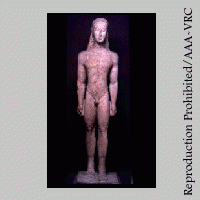
|
New York Kouros same Egyptian porportions 22-square canon. greek sculpture <> egyptian egyptian - attached to bckgrd greek - weight evenly distributed exposed male body = beauty originality not idebtedness
|
|
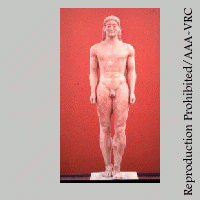
|
kouros from anavyssos Gravemaker of Kroisos Attica funerary kouros "stop & mourn" - powerful youth contradicts epitaph
also used as votive offerings
|
|
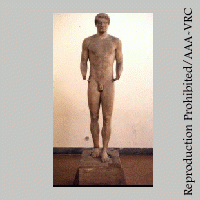
|
aristodikos funerary kouros |
|
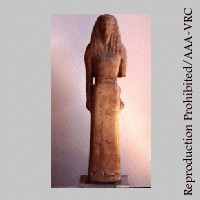
|
The Orientalizing Period kore to artemis/Nikandre Kore earliest Kore (and large statue?) Delos - c. 650 BC - Naxian marble planklike - almost no anatomical cues Nikandre identified thru males - daughter, sister, wife used to be priest of Artemis until marriage hands drilled thru - identifying features bronze flower - Nikandre herself? bow + arrow - Artemis could have just been general beauty |
|
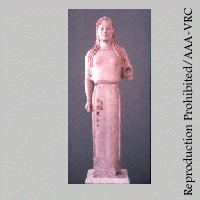
|
peplos kore - acropolis heavy woolen dress simple sculpting - intricate painting
|
|
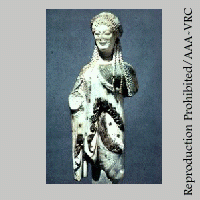
|
acropolis 675 c. 510-500 generic. drapery - cascades. left hand drawing cloth across legs - showing anatomical form |
|
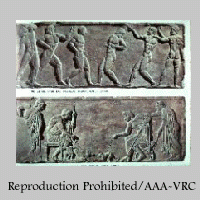
|
base of a lost kouros (relief) c. 510 - 500 BC ball players. activity - twisting & turning weakened aristocracy, increase in creative inclinations = abandon kouros |

